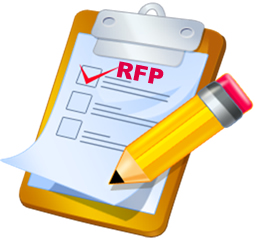A decade or so ago, while working for a large media company, the concept of issuing an RFP came up in conversation. It was easy to figure out that RFP was an acronym for "Request for Proposal", but conceptually, I was very confused. I was able to maneuver out of that discussion without needing to execute on the RFP process, thus preserving my confusion and ignorance about how it all worked. I'll chalk it up to youthful idealism, but having never learned the process, I assumed that a party in need of a service put out the request for the service into the ether, and magically, qualified offers arrived moments later. Years later, as the balance of power had reversed, I found myself at a startup on the receiving end of an RFP. One day via email, I received a 10-12 page document listing in painful bureaucratic detail the requirements for submitting a proposal for the honor of bidding on this company's project. "So this is how it works?", I thought to myself. For years, I had assumed that issuing an RFP meant posting a "help wanted ad" to some virtual bulletin board where all RFPs get viewed and magically, offers come your way, neatly filtered. This may sound like a far-fetched vision, but truthfully (and maybe embarrassingly), I always envisioned it this way. I mean, could businesses really be executing on bidding processes by taking the time to prepare a long and formal document and then, emailing it to a handful of "vendors" who they only know by word of mouth in the hopes that one or more are interested in supplying the service? Not only did that seem horribly inefficient, but also impersonal and not conducive to lasting business relationships. As I figured out, this is exactly how the process has worked.
Since I "switched" teams and began calling myself a venture capitalist, the concept of RFPs has come up repeatedly. In venture capital-speak, we often refer to these businesses as marketplaces. On one side of the marketplace, representing the economic demand, is a service seeker or buyer. On the other side, representing the supply are service providers. In an infinite number of specialized verticals, hundreds of qualified service providers and thousands of parties with demand for that same skill are hoping to connect every day. The original marketplace that showed everyone the power of the internet to connect buyers and sellers online was eBay.
For the past few months, I've spent a decent chunk of time studying the online real estate market, where numerous opportunities exist for marketplaces. Service providers across the service stack from architect, engineer, contractor, designer to window dealer, hvac installer, elevator repairer, house cleaner are all seeking the same opportunity to connect with buyers of their services. The opportunities are infinite, but they all get back to posting a need into the ether (now nicely contained by something we call the internet and organized further by verticalized marketplaces) and sitting back while the offers arrive. This is how the RFP process was meant to work and soon enough, it will for every business need.
